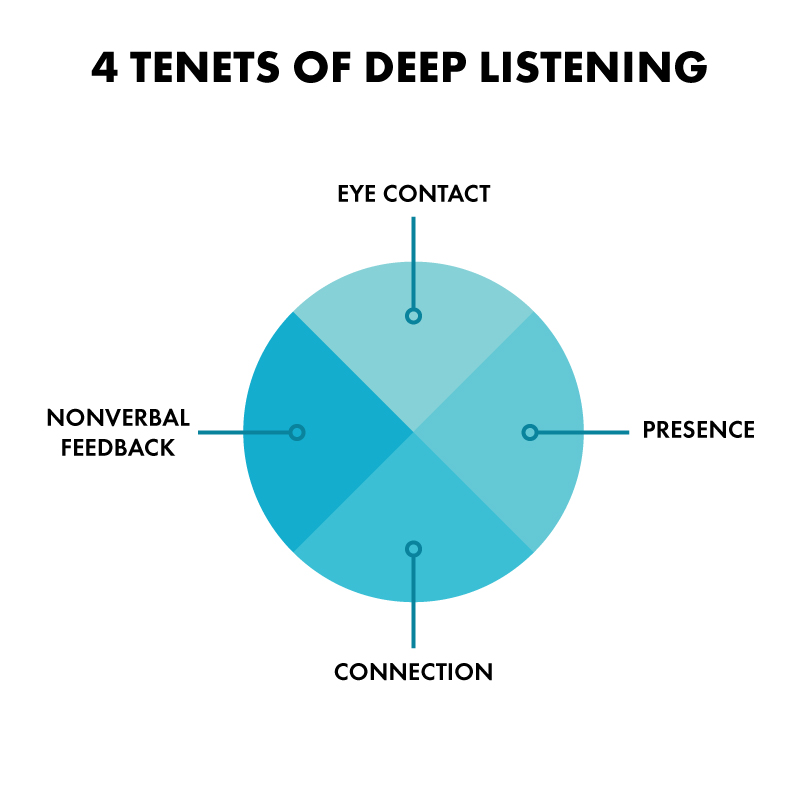
Have you ever spoken to someone who made you feel like you were the only person in the world at that moment? Who seemed truly engaged and interested in every word that came out of your mouth? How did that make you feel? Important? Understood?
To better understand how to interact and communicate more effectively with others, we spoke to body language expert Jan Hargrave, one of our Leadership Academy speakers, about the core tenets of deep listening:
Eye Contact
“By maintaining good eye contact, you are demonstrating to your conversation partner that you are fully engaged and interested in what he or she is saying. A good guideline to follow is the 80/20 rule, in which 80% of the time your eyes are meeting your speaking partner’s, and 20% of the time, your eyes are roaming as you gather information to say.”
Presence
“The average person speaks between 135 and 160 words per minute, but the average person’s brain works between 400 and 600 words per minute. This means your mind is going a lot faster than your conversation partner’s mouth, which makes it easy for your mind to drift. It’s up to you to stop your mind from shifting away from the conversation and to be truly present. Not only will you be able to fully absorb what your partner says, you will be able to respond in kind, which makes them feel appreciated and understood.”
Nonverbal Feedback
“There’s nothing worse than speaking to someone who gives no verbal feedback. It’s like talking to a wall. Make the effort to give the occasional nod, smile, or other sign of recognition to your conversation partner. These nonverbal cues may seem trivial, but have tremendous impact by showing your interest, understanding and involvement in the conversation.”
Connection
“When you are speaking one-on-one with someone, position your body in a way that creates a safe and welcoming space for him or her to speak openly. Lean slightly in, open up your chest, pull your shoulders back, and fold your hands gently in your lap or on the table in front of you. If you are standing, form a reversed hand steeple, in which the fingers come together to form a point. When someone steeples in the lap area, it means they are confident about what they are hearing.”


